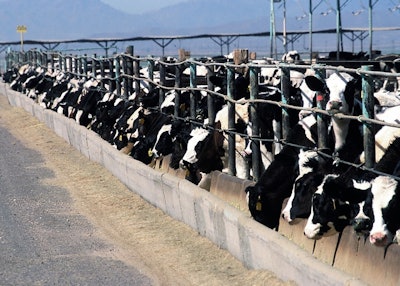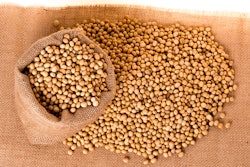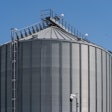
The USDA has released its latestFeed Outlook.
U.S. corn production is unchanged from the previous month at 14,506.8 million bushels, based on a national average yield of 175.8 bushels per acre. Domestic use, exports, and ending stocks are also unchanged for 2020/21. The projected season-average farm price is unchanged at $4.00/bushel.
Sorghum, barley, and oat production are also unchanged. Sorghum and barley exports are increased this month based on less domestic food, seed, and industrial use —freeing up additional supplies for the export market.
China coarse grain imports for 2020/21 are raised 4.8 million metric tons (MT) this month, based on continued strong domestic demand for livestock feed. China total imports of corn are raised 3.5 million MT to 16.5 million this month, while imports of sorghum and barley are increased as well. Global coarse grain production remains effectively unchanged this month, while exports are raised 1.2 million MT. The increased global exports are predominantly due to Ukrainian and Brazilian corn, Australia and Canada barley, and Argentine sorghum — all of which saw increased production for 2020/21.
No Changes to the 2020/21 U.S. Corn Market Outlook
There were no changes to the projected corn outlook for 2020/21 in the USDA’s December World Agricultural Supply and Demand Estimates (WASDE). The National Agricultural Statistic Service (NASS) did not publish updated corn production in its December Crop Production report, and will update its area and yield estimates in January, based on the results of the December Agricultural Survey. Production remained unchanged at 14,506.8 million bushels, with 82.5 million acres harvested and a yield of 175.8 bushels per acre.
Through November 15, 2020, in the NASS Crop Progress report’s final corn harvest progress figures for 2020, 95 percent of the U.S. corn crop was harvested. That is well ahead of the previous year’s level, as well as the average pace. At the State level, most major corn producing states saw the harvest finish above or ahead of the average harvest pace. This is in stark contrast to 2019, which saw widespread harvest delays due to a late-planted crop in some areas — as well as cold, wet weather conditions.
Exports Projected Record Fuel Use Recovering for 2020/21
国内玉米用于2020/21预计12日175.0 million bushels, unchanged from the previous month. Food, seed, and industrial use is also unchanged at 6,475.0 million bushels. Of that, 5,050.0 million bushels are projected to be used for fuel. U.S. ethanol production has been substantially lower since April 2020, coinciding with lower gasoline consumption in the United States.
According to the Department of Energy’s Energy Information Administration, ethanol production, net inputs, and inventories of corn have been rising somewhat in recent weeks — despite gasoline production and consumption remaining below historical levels. Strong prices for milling co-products — such as corn oil, corn gluten feed, and dried distillers’ grains—partially driven by increased higher prices more broadly for livestock feed—may be contributing to producers’ revenues. While an uptick in recent weeks, ethanol production and inventory levels remain below historical levels.
The United States is projected to export 2,650.0 billion bushels of corn in 2020/21, unchanged from the previous month. This would be a record export total, if realized. There is strong demand from China for feedstuffs — including corn, sorghum, and soybeans—as the country reportedly rebuilds its livestock inventories; particularly China’s hog herd, which was impacted by African Swine Fever in recent years. Additionally, weather-related year-over-year production decreases in Ukraine and the European Union have tightened supplies on the global market (for additional details see the International Outlook). This strong demand has resulted in higher corn prices over the past several months in the cash and futures markets in the United States. Trade data from the U.S. Census show increased corn exports through the first two months of the marketing year, particularly to China. Additionally, theForeign Agricultural Service’s (FAS) Export Sales Reportshows substantially higher outstanding sales to China for the remainder of the marketing year.
Corn Season Average Price Unchanged at $4.00
The season-average farm price for corn is projected to be $4.00 per bushel in 2020/21, unchanged from the previous month. This would be highest farm price since 2013/14, which averaged $4.46/bushel. NASS reported a monthly jump in corn prices received by farmers between September and October, from $3.41 the previous month to $3.61 per bushel. The current farm price projection is predicated on higher reported monthly farm prices continuing in the coming months, in line with the increases seen the past few months in the cash market for corn — particularly in the first half of the marketing year when the majority of corn is marketed.
Feed and Residual for Four Feed Grains, Wheat Projected Lower than 2019/20
Total feed and residual for the four feed grains (corn, sorghum, barley, and oats) and wheat for 2020/21 is projected to be 150.9 million MT, down from 155.8 million MT in 2019/20. There are projected to be reduced feed and residual quantities for all major grains, except for oats — which is projected to have a year-over-year increase. The overall reduction in feed and residual quantities is reflective of higher levels of exports for most commodities.
Grain-consuming animal units (GCAUs) are also projected to be slightly lower in 2020/21 compared with 2019/20—falling from 102.7 million units to 102.1 million. Year over year, lower units of cattle on feed and hogs more than offset slight increases in poultry and dairy cattle units.
To read the full report, clickhere.





















